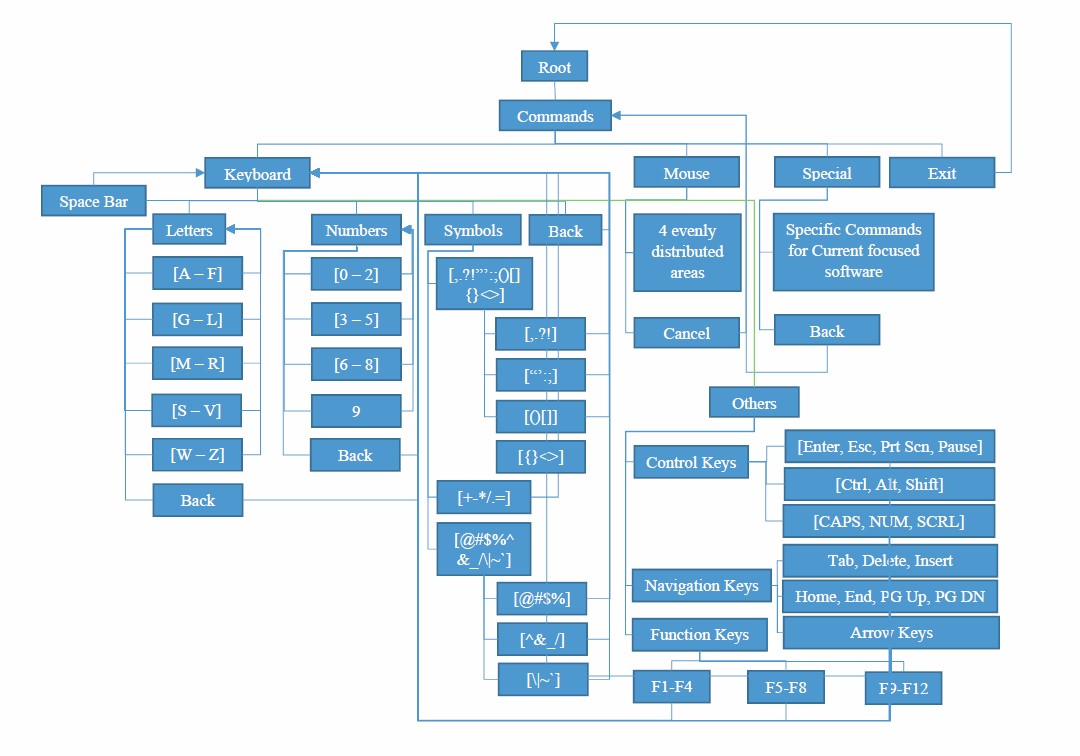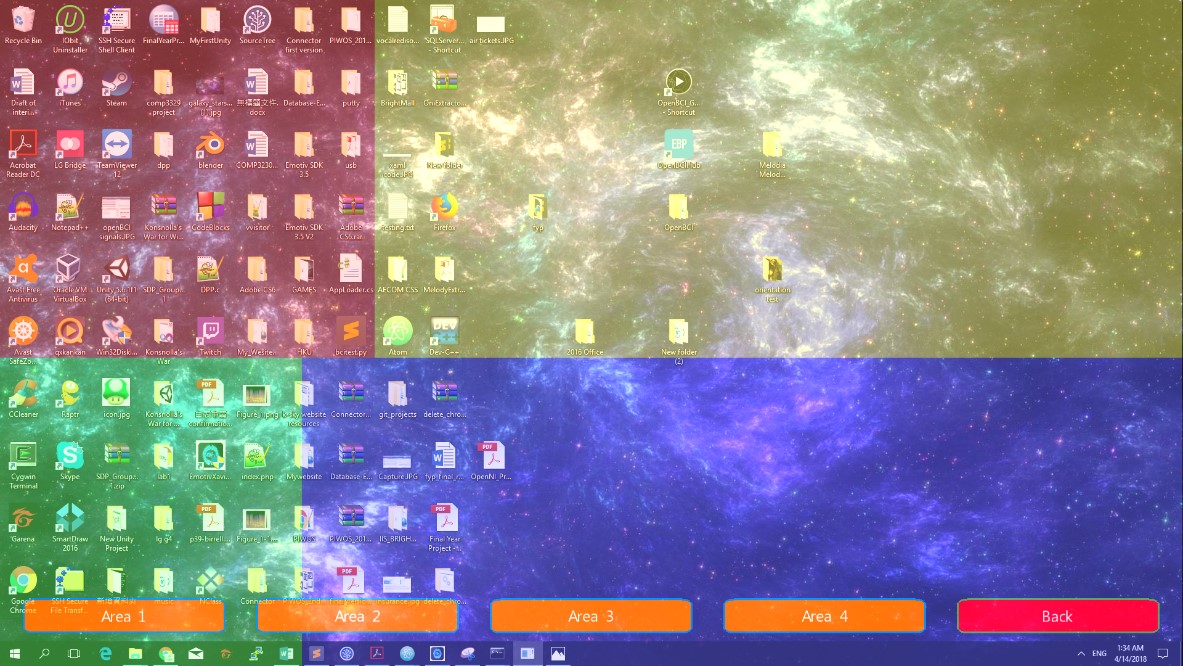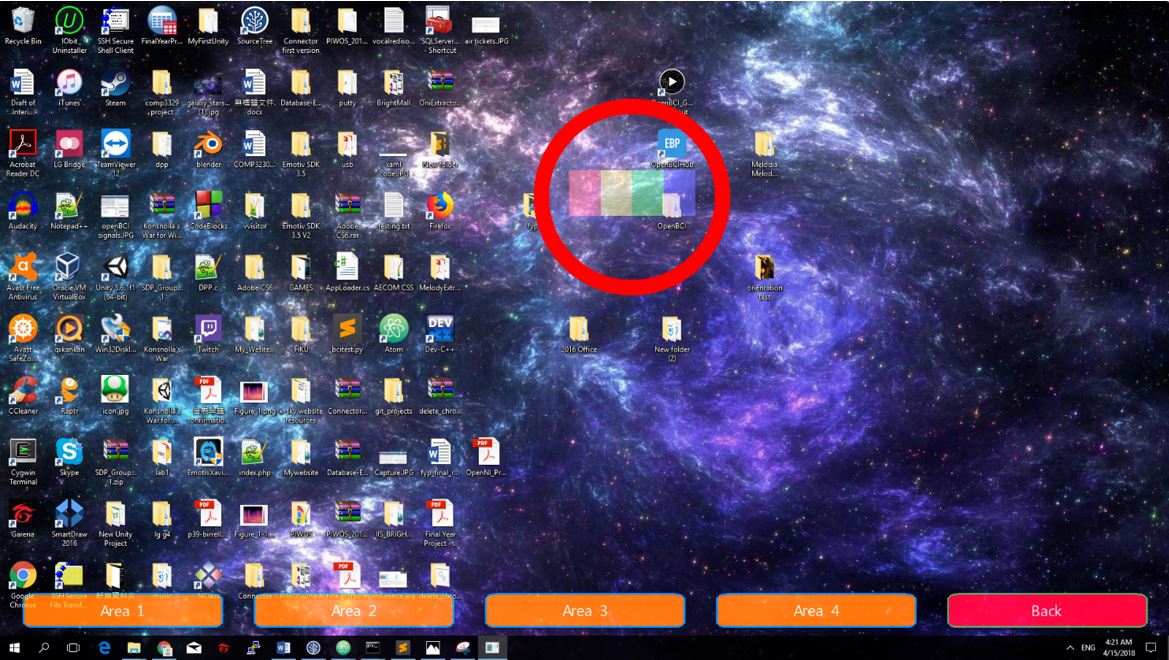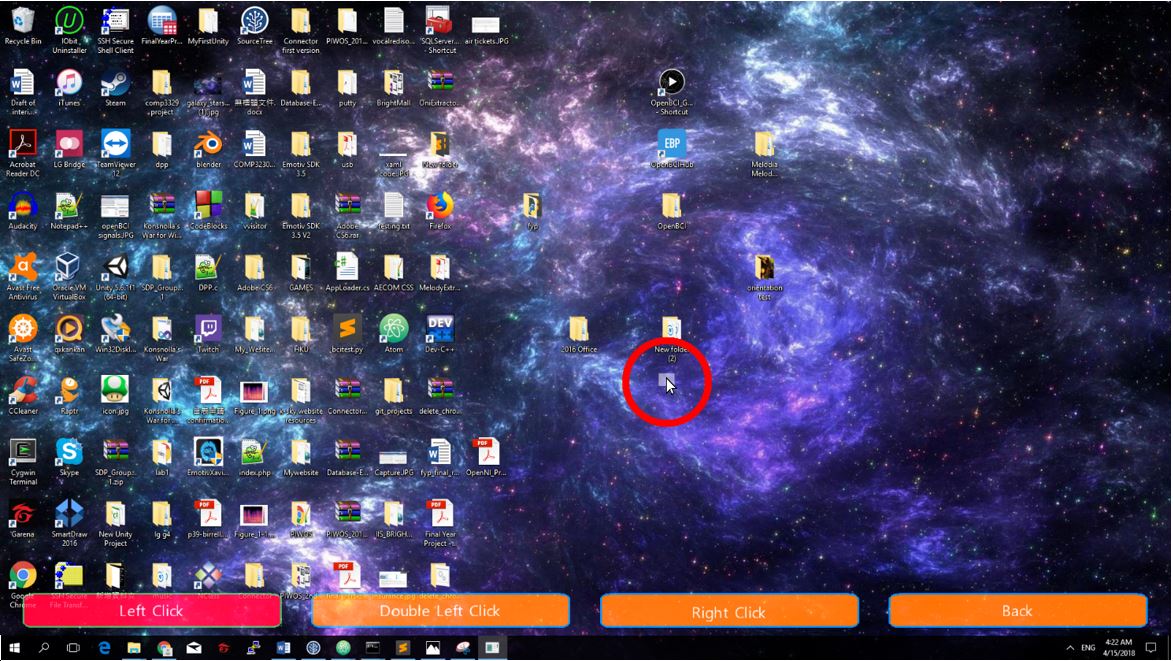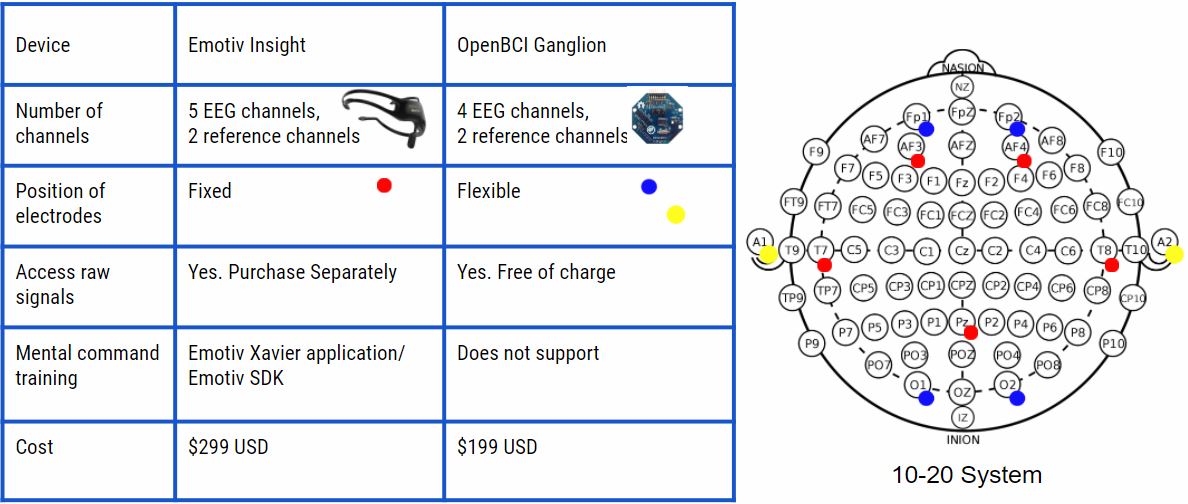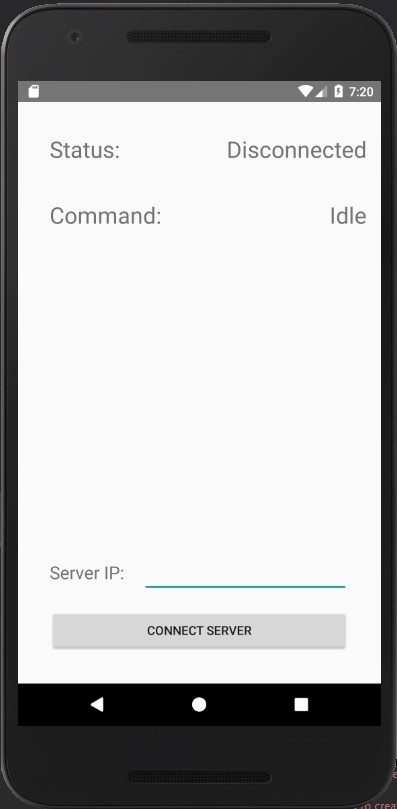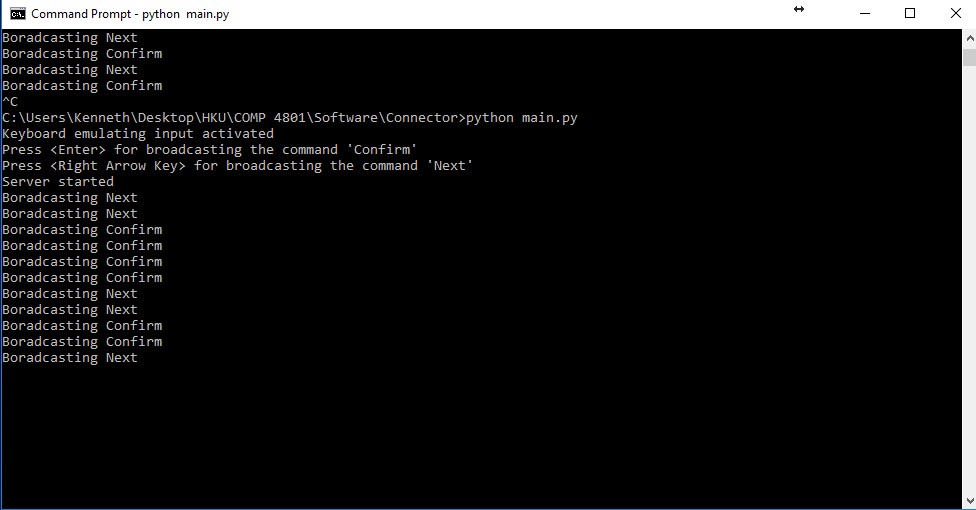Connector Component
The Connector Component receives data from the OpenBCI GUI application by the Open Sound Protocol and broadcast the predicted
commands to the Main Application by websockets. Apart from receiving real data from the OpenBCI GUI, it has also been tested by
keyboard input and remote control with Android Apps to test the Main Application by sending hardcoded commands. In real implementation,
it is embedded with the Neural Network predictions algorithms and the functions of Connector Component works as what we expected.
Training Component
The training component is implemented with four Neural Network models trained at the same time. A simple GUI is used for recording the
EEG signals and labeled with corresponding commands for training.
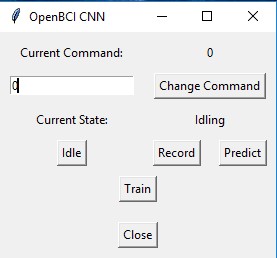
The 1-60Hz range of the FFT data is
used for training and the training accuracy is around 55 to 60%. While other two frequency ranges including 7-30 Hz and 1-125Hz are also
trained but the accuracy is lower, especially for the 7-30Hz one. Here is a prediction accuracy comparison between the 1-60Hz and the
1-125Hz frequency ranges with a prediction period of 1 or 2 seconds and also the prediction sequence over 10 times of predictions per each
expected command:



In observation of the testing results, the predictions always bias to certain commands and the accuracy is low. By comparison,
the 1-60Hz data shows a higher accuracy in overall of three commands. During real time predictions of mental command, 1-60Hz FFT
data is used and the result of the prediction only have an accuracy of 50 - 60% matching with users' thought. The major reason for
the inaccuracy could probably be caused by the inaccuracy of the training data. Due to limitation of time after changing the OpenBCI
device, EEG signals has not been examined to find out the data pattern, a brute force approach is conducted in above experiments.
Currently, stable control of the BCI system is not possible due to the inaccuracy of the mental command prediction. In the future,
investigation on the EEG signals will be conducted and a step by step approach will be used to increase the successful rate of building
a mental command prediction system.
